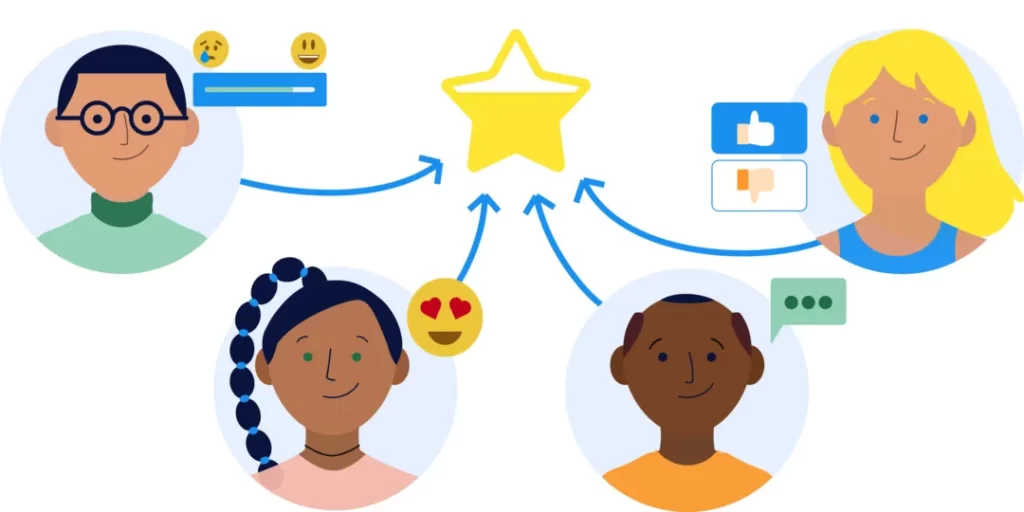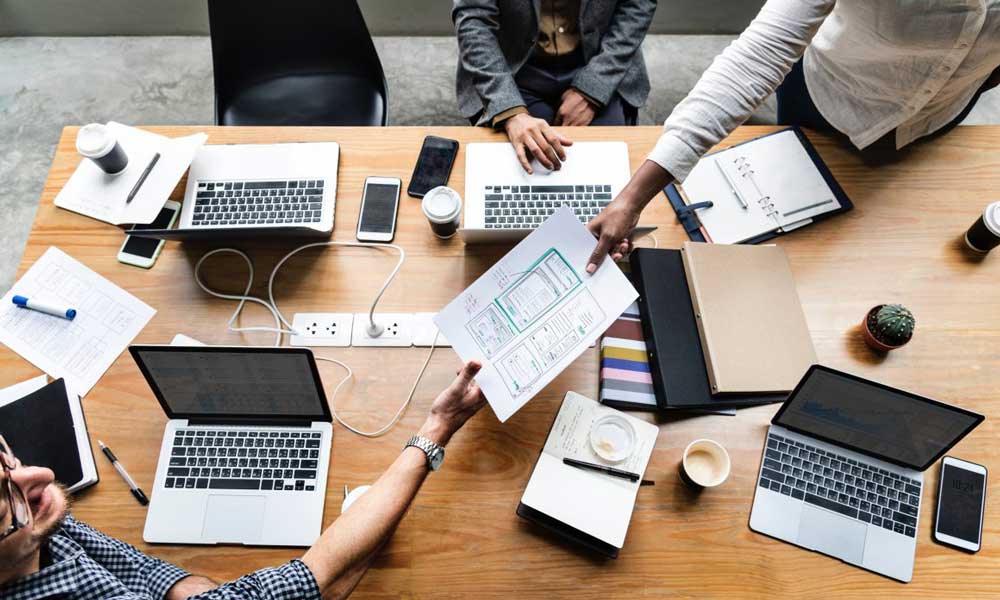The 7 Resources Your Design Team Really Needs
Have you ever felt like your design team is missing something? Like there's some mysterious ingredient or resource that could take their work to the next level if only you could put your finger on it?
As an experienced manager of design teams, I'm here to tell you that the resources you think your team needs may not be as critical as you imagine. Having too many resources can sometimes be counterproductive. It can overwhelm your designers and stifle creativity.
Most design teams need just a few essential resources to do their best work. Resources that allow them to collaborate easily, gather inspiration effortlessly, and focus on the job at hand. Anything beyond that is just extra fluff.
In this article, I'll outline the essential resources your design team needs to thrive. With these fundamentals in place, you'll be amazed at the innovation and brilliance your designers can achieve.
Table of Contents
#1 A Streamlined Creative Process

The foundation of any excellent design team is a clearly defined creative process. This provides the necessary structure for designers to do what they do best – design.
Too often, teams waste time debating process minutiae like iterations, feedback loops, and approval steps. That creative energy would be far better spent actually…well, creating.
As the leader, you must establish a simplified process upfront so designers don't have to reinvent the wheel every time. Creative steps like brainstorming, mood boards, sketches, prototyping, and user testing should all be spelt out.
Make sure to leave room for flexibility, too. Rigid processes stifle creativity just as much as no process at all. Give designers the freedom to diverge when inspiration strikes.
Once defined, document your team's creative process and share it with everyone. This could be a simple flowchart, step-by-step guide, or short video. Refer back to it often so your workflow stays lean and focused.
#2 A Thoughtful Workspace
Your team's physical workspace has an enormous (and often underestimated) impact on their performance. Surrounding your designers with an environment optimised for creativity makes an incredible difference.
Provide an open, collaborative space that sparks imagination and fuels innovation. Here are some workspace must-haves:
- Lots of natural light. Studies show that exposure to natural light enhances creativity and well-being.
- Whiteboards everywhere. Visual thinkers need ample room to sketch and ideate.
- Stand-up desks. Standing promotes energy and collaboration.
- Comfortable seating. A mix of chairs, couches, stools, and beanbags.
- Greenery. Live plants boost mental clarity and concentration.
- Inspiring artwork. Showcase designs from past projects or internal artists.
- A community table. A place to gather, share meals, and bond as a team.
- Calming colors. Avoid overstimulation with neutral tones.
- Ambient music. Curate playlists that energise or help focus.
Your workspace doesn't need expensive renovations to support creativity. Small touches like plants, artwork, and flexible seating make a big difference. Spend time observing how your team interacts in the space and continually optimise for collaboration.
#3 The Right Tools

Every designer has their own set of go-to tools. As a manager, your job isn't to dictate which tools they use but to provide access to great options.
Build a digital toolbox that empowers designers to choose the tools that match their style and preferences. Here are some must-haves:
- Design software like Sketch, Figma, and Adobe Creative Suite. Provide a range so designers can pick their faves.
- Illustration tools like Procreate, Illustrator, iPad, and Apple Pencil. Let visual thinkers play to their strengths.
- Whiteboarding tools like Miro, Mural, and Conceptboard. Facilitate remote collaboration.
- Project management like Asana, Trello, and Notion. Keep projects on track.
- File storage like Dropbox and Google Drive. Centralise assets and deliverables.
- Asset libraries with icons, fonts, photos, and graphics. Speed up ideation and prototyping.
- Research tools like Optimal Workshop UserTesting. Test concepts with real users.
Having the right tools in place gives designers everything they need to go from idea to execution seamlessly. Invest in quality tools and keep them updated. Meet regularly with your team to ensure their toolkit has everything required to produce their best work.
#4 A Curated Library of Design Inspiration
Inspiration is the lifeblood of great design. Surrounding your team with excellent examples elevates their work by sparking new ideas and perspectives.
Provide a thoughtfully curated library of design inspiration that becomes part of your team's everyday workflow. Share books, magazines, websites, newsletters, podcasts, social media feeds, events, museums, and more.
Here are some sources I recommend:
- Design journals like Communication Arts and HOW Magazine.
- Industry blogs like Design Milk and Dezeen.
- Books by design thought leaders like Seth Godin's This is Marketing.
- Newsletters like Design Matters and Next Draft.
- Podcasts like 99% Invisible and [Design] Dialogues.
- Social media feeds from top agencies and studios.
- Local design museums and exhibits.
Make inspiration by gathering a team activity by asking members to contribute their favourite sources. Maintain a shared digital library using tools like Pinterest or Notion.
Build time into your team's schedule for consuming and discussing inspiration. Have them share standout pieces during meetings or over lunch. This infuses your creative process with fresh ideas and influences.
#5 Constructive Feedback Loops

Giving and receiving feedback is how your designers will grow as creators. Make peer-to-peer feedback an integral part of your team's creative process.
Set expectations that feedback should be kind, actionable, and oriented toward improving the work. Lead by example in how you give feedback to designers. Focus on potential rather than shortcomings.
Here are some tips for fostering healthy feedback loops:
- Review work collaboratively instead of alone. Group critiques build camaraderie.
- Discuss work early and often. More feedback = better results.
- Provide feedback verbally and visually (e.g. sketches). Different styles spark new insights.
- Guide designers in giving feedback to each other. Develop their analytical skills.
- Track feedback and iterate. Don't stop at just giving feedback. Put it into action.
- Close feedback loops. Dedicate time for revisions based on feedback.
- Reward great feedback with praise, compensation, or promotion. Reinforce the behaviour you want to see.
The more your team shares constructive feedback, the faster their skills and work will improve. Make it a truly collaborative process focused on elevating the end design.
#6 Camaraderie Among Team Members
Don't underestimate the importance of camaraderie on your design team. Close professional relationships help designers communicate, collaborate, and support each other effectively.
Make relationship building a priority through team activities like:
- Regular social events outside work. Do fun activities together, not just happy hours.
- Showing appreciation. Celebrate work anniversaries, birthdays, and wins.
- Recurring rituals. Things like weekly lunches or design jams.
- Personal check-ins. Talk about life, not just work.
- Remote bonding. Send care packages, have video coffee chats, and more.
- Offsites and retreats. Immersive experiences in inspiring locations.
- Orienting new hires. Make them feel welcomed and part of the group.
Don't force relationships. Authentic camaraderie develops naturally when you demonstrate genuine care for your team and make bonding a consistent priority.
#7 Executive Support

Even with all the right resources, your design team still needs supportive leadership who empowers them to do the best work of their careers.
Be their most prominent advocate, especially with key stakeholders. Establish trust so designers feel comfortable presenting new ideas. Shield them from bureaucratic distractions.
Empower designers with authority over their projects and processes. Make it clear that you support their decisions. Offer guidance, not mandates.
Allow designers to flex their specialised skills while aligning their work with business objectives. Give challenging assignments that help them grow.
And above all, treat your team with humanity, compassion, and respect. Recognise their contributions and embrace their unique creative diversity. Be the leader you wish you had.
With your support and the other resources outlined here, your design team has everything needed to thrive. Avoid overcomplicating things. Focus on fundamentals, remove obstacles, and let their talent shine.
The results will speak for themselves.
Frequently Asked Questions About Resources for Design Teams
Effective design teams require the right resources and environment to maximise creativity and collaboration. Here are answers to common questions managers have about properly equipping their teams:
What's the most cost-effective way to improve our design workspace?
Simple changes like adding plants, artwork, flexible seating, and whiteboards can boost collaboration at little cost. Observe how your team interacts in the space and make tweaks over time.
Should our design team use Mac or Windows computers?
Give designers the OS they prefer. There are great tools on both platforms. Support personal choice to optimise creativity.
How often should we buy new tools and software?
Aim for significant updates every 2-3 years—budget annually for incremental improvements. Meet with the team quarterly to ensure their toolkit is up to date.
How can we better facilitate collaboration between remote designers?
Create digital spaces for idea sharing, like Miro boards. Overcommunicate via video chats. Send collaborative gifts like whiteboards. Bring remote folks onsite periodically.
What's the best way to curate design inspiration for our team?
Ask each team member to suggest their favourite sources. Maintain a shared digital library in a tool like Pinterest—schedule time to review inspiration together.
How can we train junior designers to give better feedback?
Coach them to give feedback that's kind, specific, and focused on solutions. Have seniors model constructive feedback in group critiques.
Should designers attend conferences and events?
Yes, build it into their professional development. Pick 1-2 most relevant annual events per designer. Gather afterwards to share learnings.
How often should we have team offsites or social events?
Aim for quarterly offsites and monthly informal social gatherings. Remote teams should gather annually in person.
What if particular designers on our team don't collaborate well?
Address issues privately through coaching and feedback—model collaborative behaviours yourself. The last resort is reorganisation.
How can we get stakeholder buy-in for design processes?
Involve them early and keep them informed. Share examples of how processes drove successful outcomes.
Equipping your design team with what they need to do their best work doesn't require huge investments. Thoughtful attention to fundamentals like process, environment, tools, inspiration, feedback, camaraderie, and leadership makes all the difference. With these basics in place, your designers will have the support to unleash their creative potential, and the results will follow.
